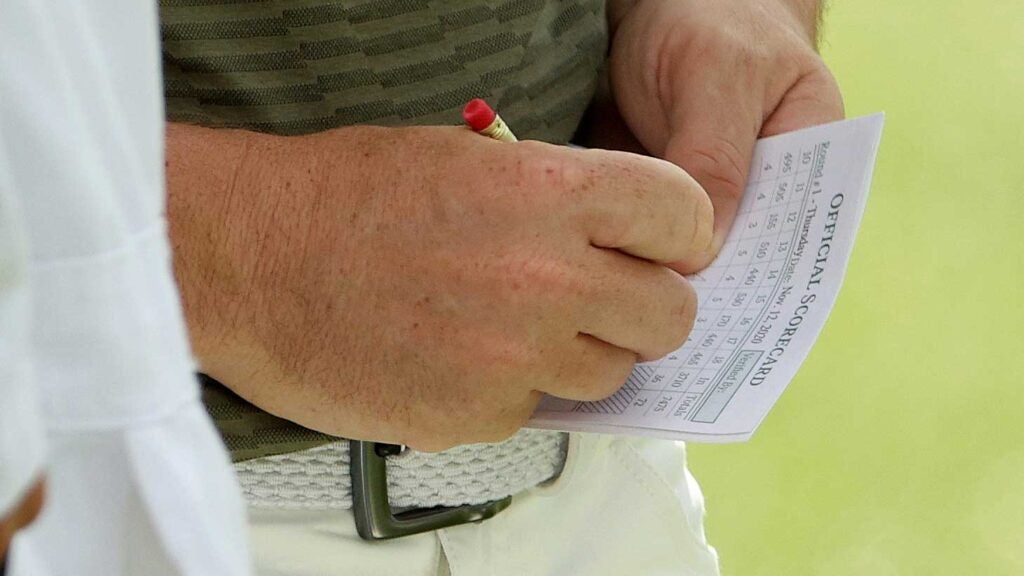These are divisive times in golf. But the game still has a unifying force.
The handicapping system, designed to keep us all on a level playing field.
In January, 2020, the USGA and the R&A expanded the system’s democratizing reach by rolling the six existing handicapping systems around the globe into a single World Handicapping System.
The WHS has brought a range of benefits.
Easy to understand, without sacrificing accuracy, it has made it simpler to establish a handicap. The system is also adaptable to all golfing cultures, allowing players of varying ability to compete fair and square on any course, in any format, anywhere on the planet. (Don’t have one? Head here to get started.)
Golfers have responded in droves.
In the United States alone, more than 2.86 million golfers now keep a handicap, a roughly 10 percent jump since 2020. In 2021, more than 82 million scores were posted on the GHIN system, the digital platform that supports the WHS. In the past three months, through a joint initiative of the USGA and its 58 affiliate state and regional associations, some 50,000 golfers joined the GHIN fold.
Of all the reasons to establish and maintain a handicap, the most compelling is that it makes the game more fun. It gives you access to a great assortment of events. It also gives you personal targets, benchmarks to help you gauge your progress. Not that you have to be serious stick. To make it easier to establish and maintain an index, the government bodies have raised the maximum handicap to 54.
“I think the biggest myth about handicaps is that people think, ‘I’m not good enough to have one,’” says Steve Edmondson, managing director of Handicapping and Course Rating for the USGA. “That runs counter to the purposes of a handicap — it’s meant to make the game more enjoyable for everyone.”
A growing number of golfers have learned this. As they establish handicaps, the golf world has also learned more about them.
Here’s a peek at some handicapping facts and figures, along with a look at newly added handicap-related innovations and others that are coming down the pike.
The game is more global than ever
Before 2020, the six separate handicap systems in use around the globe included just over 80 countries. There are 119 countries in the WHS today.
It takes time to add a country
For a country to be part of a handicap system, its courses must be rated. The governing bodies got working on this long before launching the WHS. In some countries, it took upwards of 5 years to rate the courses. On average, the game’s governing bodies and their affiliated state and regional associations rate 3,000-4,000 courses a year.
The average handicap has held steady
In recent decades, the average handicap hasn’t changed much. And it has held pretty much steady since the launch of the WHS. Today, the global average is 14.5. In the United States, it is 14.2 for men and 25.7 for women — numbers that are pretty much on par with those around the world. The USGA will have more comprehensive handicapping data at the end of this year, thanks to a new Centralized Handicap Computation Platform.
More men play, but more women are joining
Men make up roughly 79 percent of golfers with handicaps, and women roughly 21 percent. But girls and women currently represent the fasting growing segment of the game.
The techies are always working on their games
The move to the WHS came with a complete overhaul of the GHIN platform, which was simplified significantly for the user even as it added a range of sophisticated features. In partnership with GolfLogix, which is an affiliate of GOLF.com, green-reading and GPS technology functions were added, giving golfers ready access to valuable information through their mobile phones — all in accordance with the Rules of Golf.
As of this month, the GHIN app is also now Apple Watch-compatible, bringing the power to keep score and track stats to golfers’ wrists.
Other innovations are on the way, including more advance stat-tracking, as well as a games feature that will make it easier for golfers to keep track of friendly competitions. Who gets strokes on which holes in a four-ball match for a beer? Let GHIN handle that. By 2024, the USGA also plans to add features that will make it simpler for golfers to log 9-hole and other alternate-length rounds.
